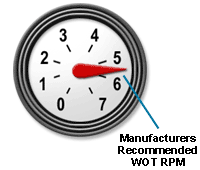
Manufacturer's Recommended RPM (see image 1)
Check your owner's manual or contact your dealer to find the manufacturer's recommended RPM range.
Wide Open Throttle (WOT) RPM
For safety and efficient performance, make sure that your engine is running within the manufacturer's recommended RPM range.
Matching the right prop for the load is the most significant factor of RPM adjustment.
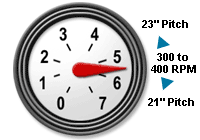
Effect of Prop Pitch on RPM (see image 2)
Changing the boat propeller pitch will increase or decrease the RPM's. Adjust the pitch so the RPM's fall within the recommended range.
A 2" pitch increase (21" to 23" for example) acts like shifting a car gears up. It typically results in a 300-400 RPM decrease.
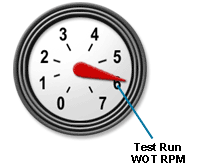
Test for Maximum RPM (see image 3)
Using your existing boat propeller or a new propeller, make test runs to determine the maximum RPM and boat speed.
Vary the trim angle for optimum performance.
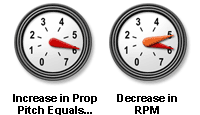
RPM Higher Than Recommended (see image 4)
If the actual WOT RPM's are above the recommended RPM range, install the next larger pitch option to decrease your WOT RPM. Re-test the WOT RPM.
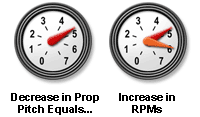
RPM Lower Than Recommended (see image 5)
If the actual WOT RPM range is below the recommended range, install the next smaller pitch option to increase your WOT RPM. Re-test the WOT RPM.
When you combine all these factors, you have the information you need to select the correct propeller for maximum performance, safety, and fuel efficiency.

















